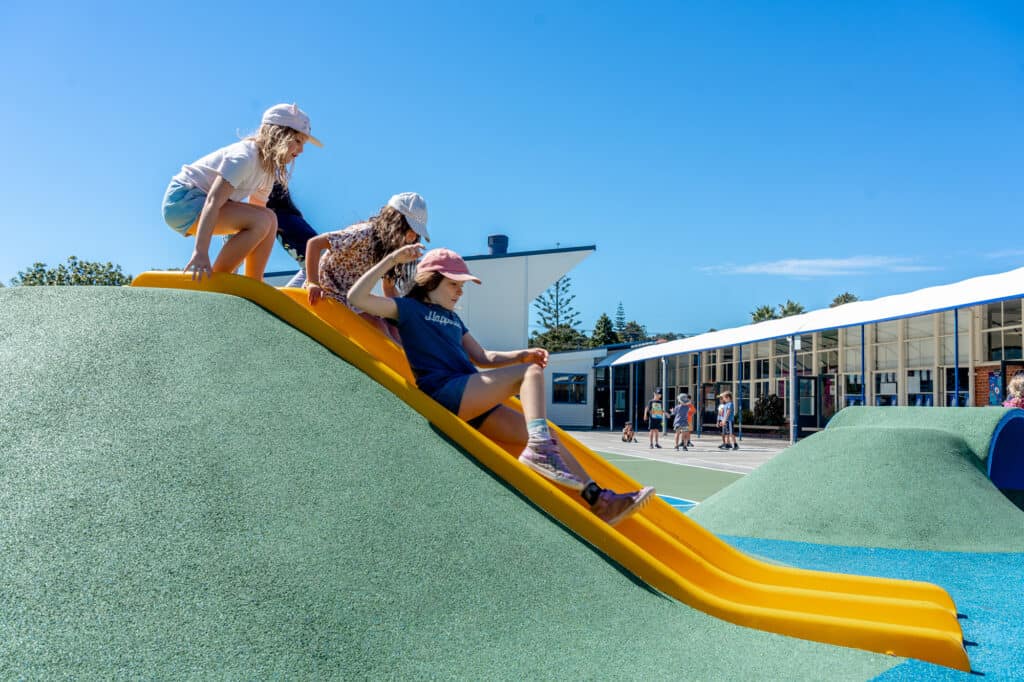Imagine a playground that goes beyond the traditional swings and slides to offer a multi-sensory experience for children.
Welcome to the world of sensory playgrounds! These specialised play areas are designed to stimulate all five senses—sight, sound, smell, touch, and taste.
Research indicates that sensory playgrounds provide children with crucial sensory, motor, and socioemotional experiences that are essential for their development.
Moreover, these playgrounds offer an inclusive environment, especially beneficial for children with disabilities.
How Sensory Playgrounds Stimulate Senses
These type of play spaces are not just about fun but also about learning. The various elements in these playgrounds are designed to engage children’s senses actively.
For instance, textured paths and surfaces can stimulate the sense of touch, while musical instruments like drums or chimes can engage the sense of hearing.
Studies show that a rich tapestry of experiences in sensory playgrounds can promote cognitive and physical development.
The Benefits of Sensory Play in Sensory Playgrounds
The benefits of sensory play are many, particularly for preschoolers and elementary school students.
Sensory playground activities help develop fine and gross motor skills, improve focus, and enhance cognitive abilities. Research also highlights that sensory play is integral to children’s emotional well-being.
Designing for Inclusivity
One of the most compelling aspects of sensory playgrounds is their potential for inclusivity. Traditional playgrounds often present barriers for children with disabilities, limiting their engagement in play.
On the other hand, sensory playgrounds can be designed to be accessible to all children. Studies offer evidence-based recommendations for designing inclusive spaces, such as considering the physical design and the surrounding built and social environments.
Equipment and Activities in Sensory Playgrounds
When it comes to sensory playgrounds, the sky’s the limit! The options are endless, from tactile walls with different textures to water play areas that engage multiple senses. Some other examples include:
- Sensory Gardens: Plants of various textures and smells
- Sound Stations: Different types of bells and chimes
- Visual Boards: Boards with various colours and patterns
The Role of Colours, Patterns, and Textures in Sensory Playgrounds
Colours, patterns, and textures play a significant role in sensory play. Bright, contrasting colours can stimulate visual senses, while textures like rubber, sand, and grass offer a diverse tactile experience.
Patterns can also create visual interest and even aid in developing pattern recognition skills.
Safety First: Best Practices
Safety is paramount when designing any kind of playgrounds. The design should adhere to safety standards and regulations to ensure a secure environment for all children.
Research suggests that some of the best practices include considering entry points, surfacing and paths, and features that foster inclusive play.

Conclusion
Sensory playgrounds offer a unique and enriching experience for all children. They provide a fun and engaging environment and contribute significantly to children’s physical and cognitive development.
By incorporating elements that stimulate all senses and by adhering to safety and inclusivity guidelines, sensory spaces can genuinely be a haven for every child.
So, the next time you see a sensory playground, you’ll know it’s more than just a play area—it’s a developmental goldmine for children.
Have fun!

